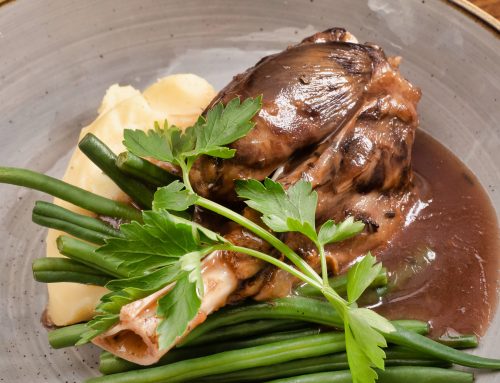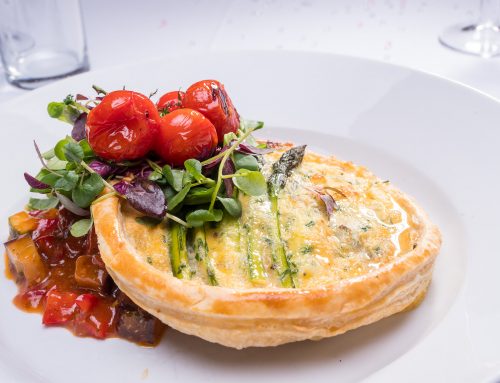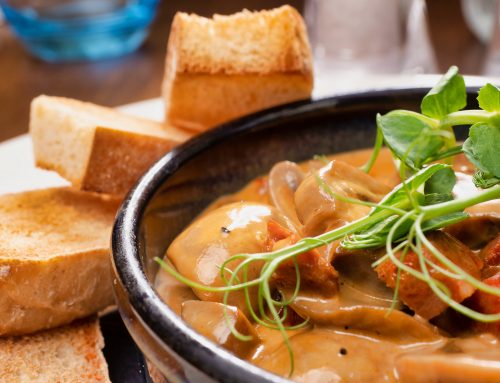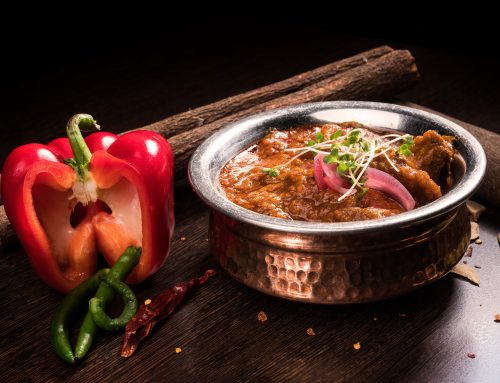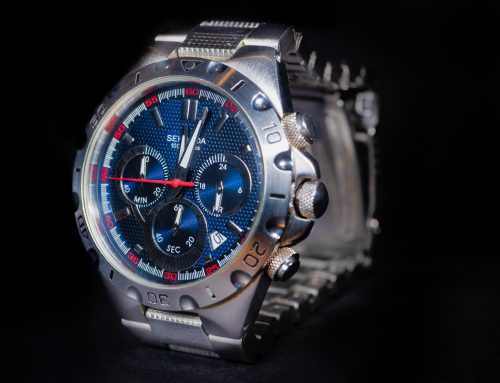Photographing Food With Speedlights
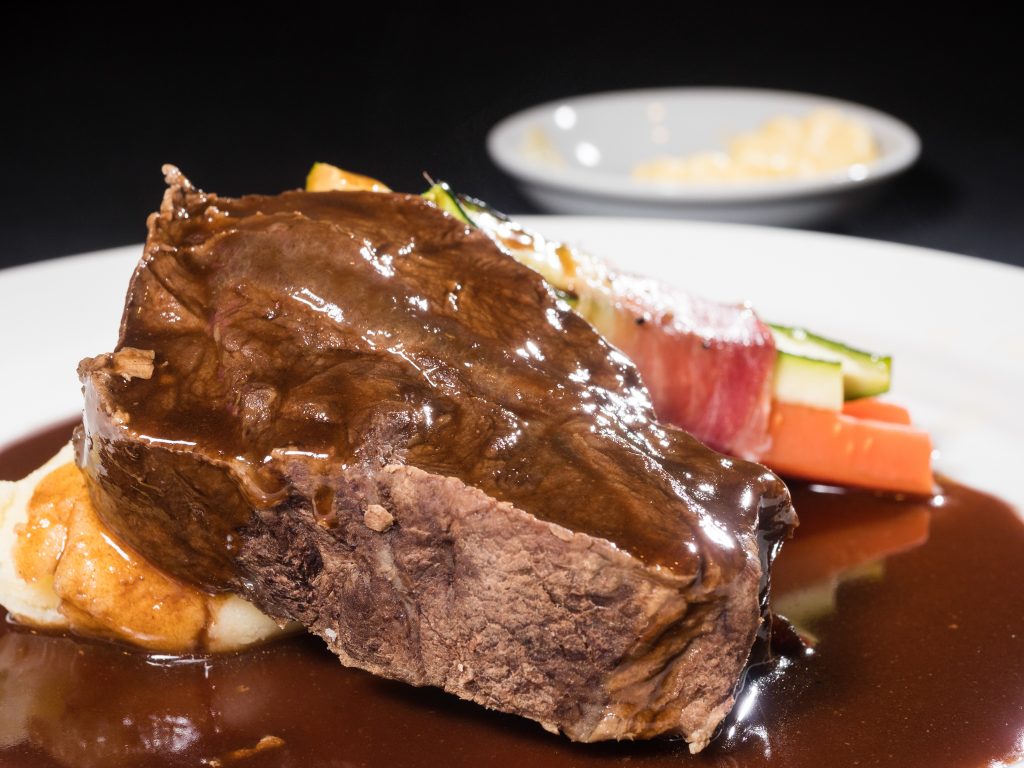
Normally, I make use of a couple of ELB500 kits for my food photography. The heads are light, and can be boomed overhead without any real thought as to counterbalancing etc. They are certainly what I would say were ideal for the job.
However, occasionally, I need to pack ultra light ‘n’ tight, and between you and me, the battery packs for the ELB500 are somewhat weighty. And then there are the occasions where you rock up to cover something like an awards dinner, where they don’t want a mobile studio, or anything requiring lights. They just want the ambience capturing, and folks at the table etc. Except as soon as you walk through the door, they ask if you can photograph the food, so they can promote next year’s event. And you stand there, smiling your best fixed grin, as you say “Of course!”, wondering why the hell you listened to them in the first place, and wishing you had brought your usual kit anyway.
No, I’m not particularly pointing a finger here. Well, not much.
Anyway, in a situation like this, you simply say yes, and figure it out as soon as the client has turned their back.
Speedlights. Thank my lucky stars I always carry a load of speedlights. I mean, why wouldn’t you?
The best thing about food photography is the fact it requires very little lighting. Even when using the EB500s, I tend to have my keylight at an output of 1.0 (Equivalent to 12Ws), and my accent at an output of 0.1 (equivalent to 7Ws). These are power settings easily matched by pretty much any speedlight, including the most miniscule. The main challenge tends to be the modifier, although that is no longer the issue it used to be. There are a much greater number and style of modifier for speedlights than there used to be. And then there are adaptors, allowing studio light modifiers to be used with speedlights. Types and cost of these adaptors can vary hugely, but one of the most popular is the Godox S type, which opened up the huge array of S fit light modifiers for speedlight users. There is also an Elinchrom fit version too.
But lets keep it really simple, and go back to the image at the top of the page. This was one of those scenarios where I was told I wouldn’t need any lights, and it’s just to capture the room etc. Well, until they asked for the food imagery. As it happens, I tend to pack an ultra compact folding softbox. Well, it’s more of a disc, to be honest. The Sundisc was launched in 2017, and has saved my neck on a number of occasions. I used the Sundisc with the speedlight for the key light, positioning it just above the plate, with the speedlight on a tiny stand.
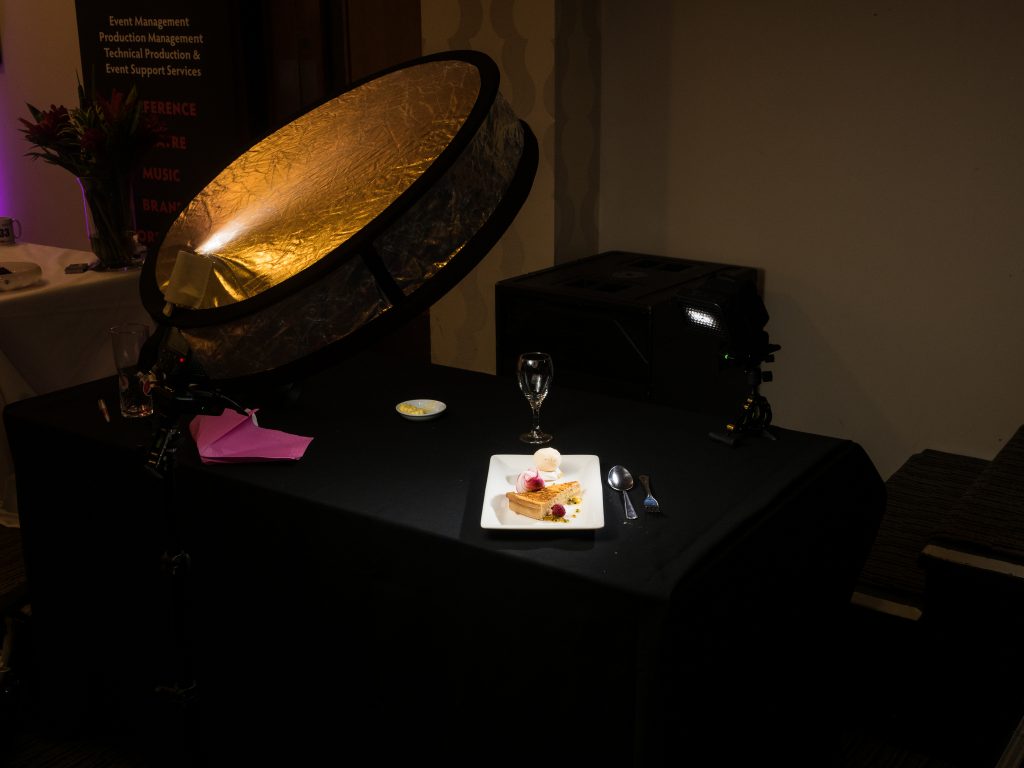
This is the behind the scenes image, showing the sundisc frame left. You will also notice my accent light is frame right, and consists of a speedlight using a very basic velcro’d grid. This was some cheap and cheerful purchase from ebay. Again the speedlight was just sat on one of those plastic stands that come with the speedlight, that most folks never get around to using before they lose it.
I had the key light set to 1/8th output to start, and found it needed bumping up to ¼. The Accent light was set to 1/8th.
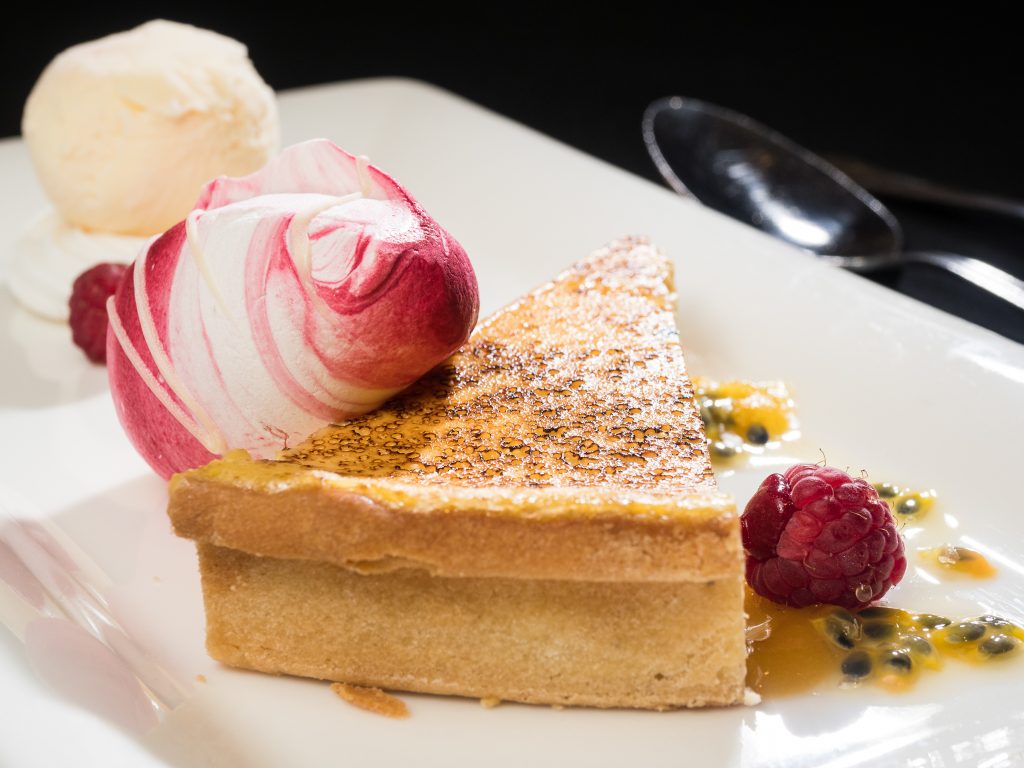
This is another image from the same shoot.
One of the biggest challenges, is finding modifiers that can be filled with light correctly, when used with speedlights. The internal focusing and reflector systems that are found in speedlights make them very efficient, but can cause issues when used with modifiers.
The design of the speedlight head tends to throw the light forward, causing little light to actually hit the inside walls of the softbox, reducing their effectiveness. There are a fairly wide range of speedlight specific softboxes that allow the speedlight to face the back of the box, creating a much better result.
And of course, we will always have the trusty old umbrella, which can be as big or as small as you wish. There are also options to make use of an additional diffusion panel that fits the front of the umbrella, effectively turning it into a softbox.
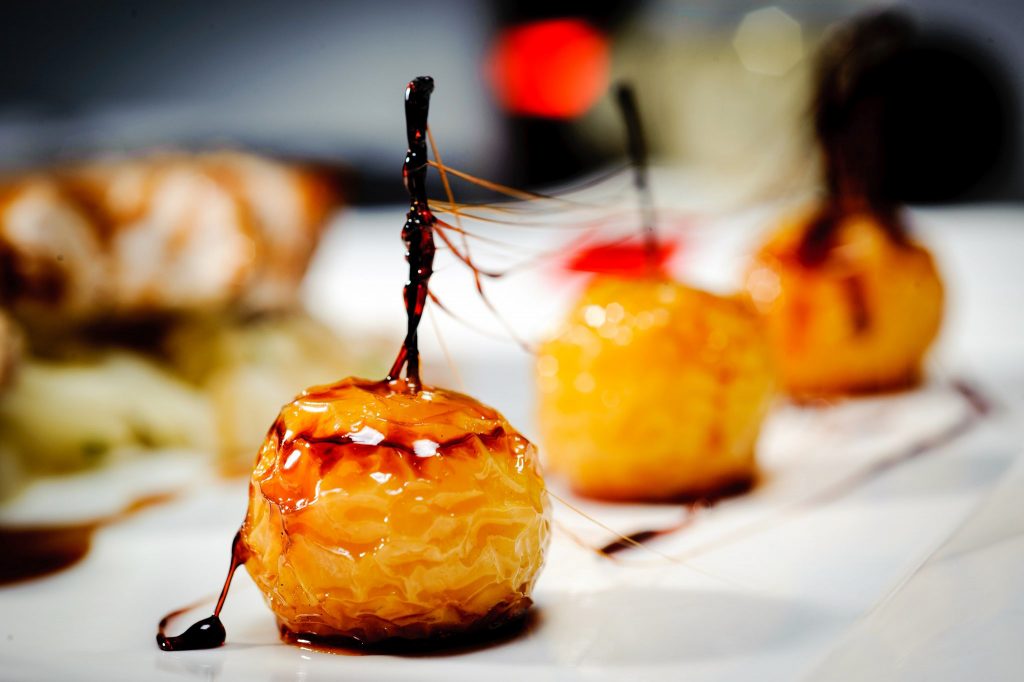
This image was from a shoot in 2010, when my location light blew a capacitor. Yep, it wrecked the battery box and ruined my trousers!
Anyway, I switched to speedlights, and at the time, I had a smallish silver lined reflective umbrella, which I used as a the keylight. You can see the reflection of the umbrella in the catchlight. The accent was another speedlight frame left. Although, if I were to be honest, I don’t think I had turned it up high enough. This was the first image after changing to the speedlights.
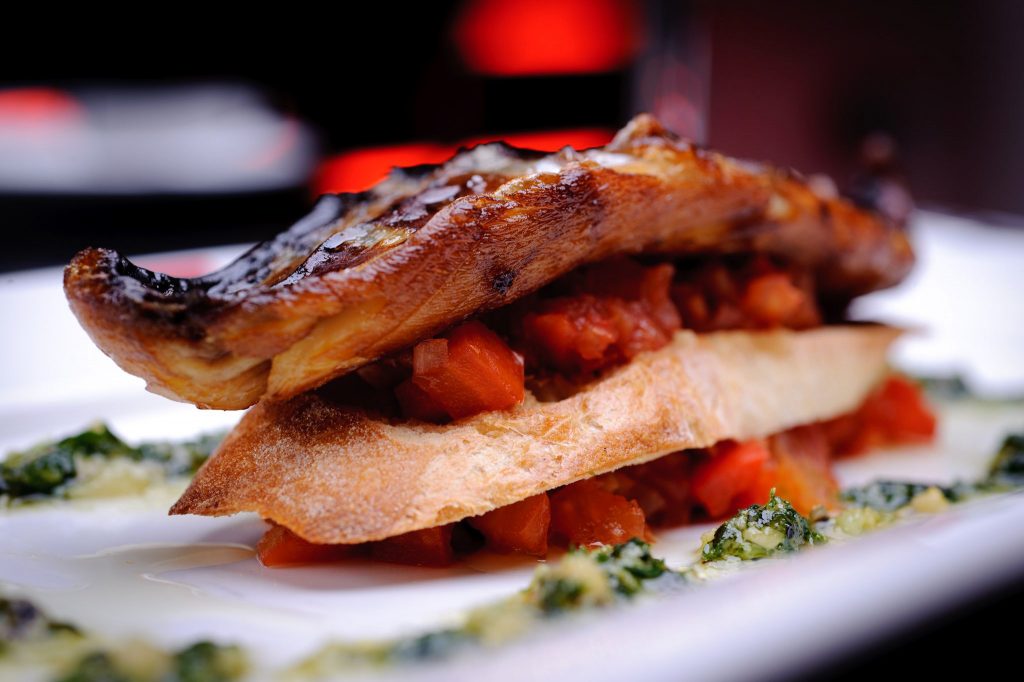
This was an image from later in the same shoot, once I had settled into it. Again, still using an umbrella for the key light, but a lot more subtle, as it provides a nice overall ambience. The accent speedlight is frame left and again, a little more subtle than my usual style. I didn’t have any form of grid I could use on a speedlight, so I had to simply flag it, in an effort to reduce the likelihood of flare.
It’s surprising what you can get out of speedlights, with a little thought.
My food photography portfolio can be found here.
